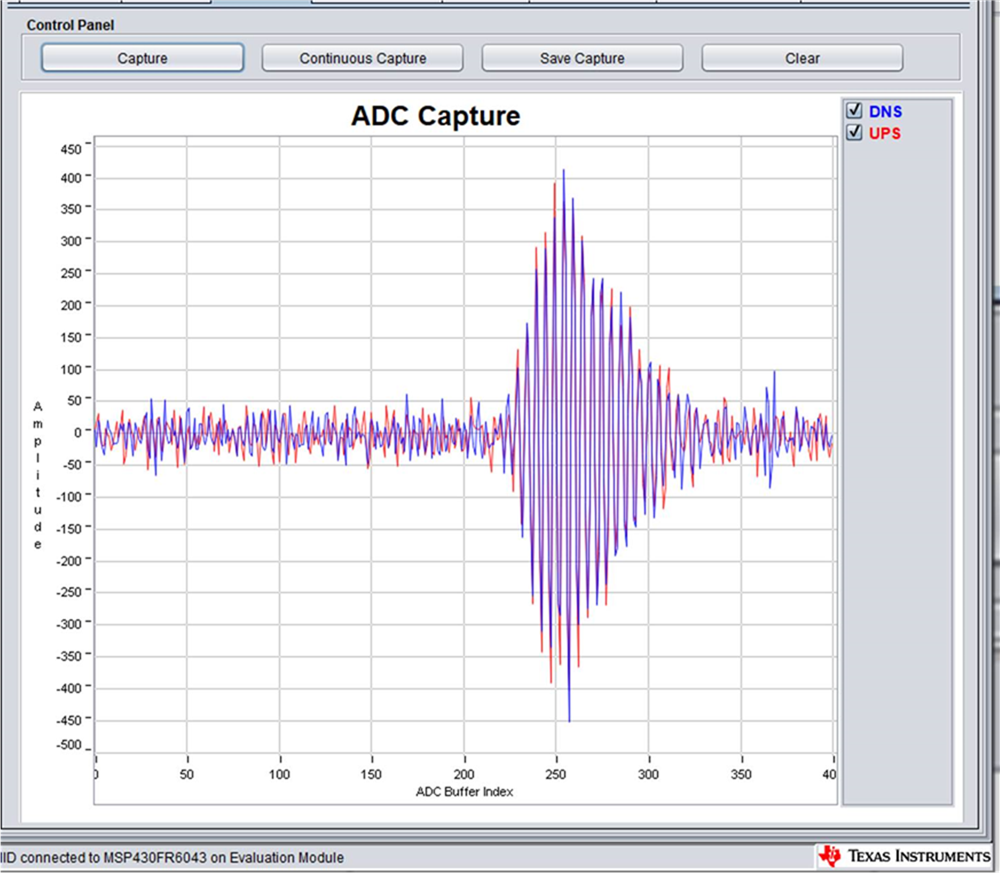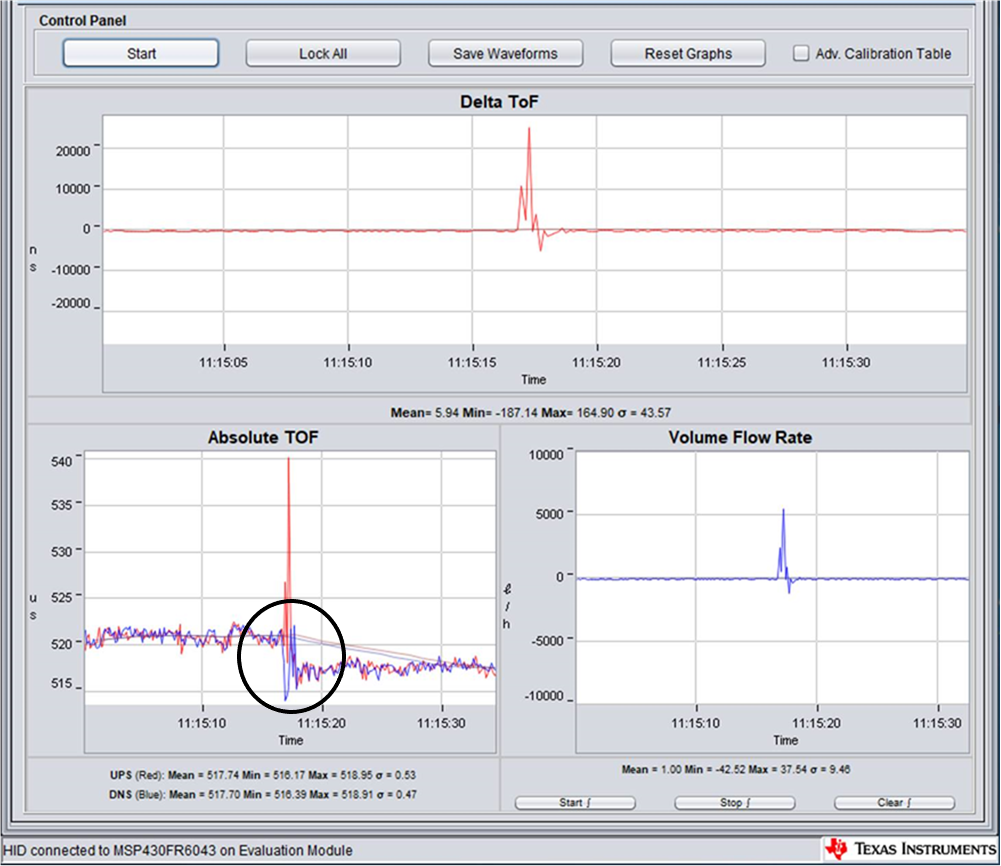SLAA951A August 2020 – September 2020 MSP430FR5041 , MSP430FR5043 , MSP430FR6005 , MSP430FR6007 , MSP430FR6041 , MSP430FR6043 , MSP430FR6045 , MSP430FR6047
2 Test Results
Test results below show the Captured ADC waveform and the transition that occurs in the absolute time of flight when a half teaspoon of liquid is added to the cup. This test was performed at room temperature.
 Figure 2-1 ADC Capture
Figure 2-1 ADC CaptureFrom Figure 2-2, it can be seen that there was a change of approximately 3 μs in the absolute time of flight after adding a half teaspoon of liquid to the coffee cup. During this liquid addition, a transition between the upstream and downstream signals can also be seen in the delta Time of Flight (surface movements can also be resolved). The test setup described in this document can sense changes in the absolute time of flight of less than 50 ns. At room temperature, the speed of sound travels at 343 m/s through air. A temporal resolution of 50 ns would therefore translate into a spatial resolution of 17 μm. Because the distance traveled is twice the distance between the transducer and the liquid, the level sensing resolution is around 8.5 µm.
 Figure 2-2 Liquid Level Sensing Test Results
Figure 2-2 Liquid Level Sensing Test ResultsThe minimum distance from the transducer is about 1.5 cm due to ring down (at 3.3 V). The maximum distance from the transducer is about 20 cm.
As can be seen through this simple experiment, the MSP430FR6043 enables best in class liquid level sensing at a fraction of the cost and hardware required by other solutions.